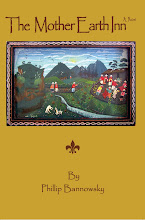-Phillip Bannowsky, BT Blog Editor
About the Cover
On the cover is a map that accompanied the 1938 publication, A Guide to the First State. Produced by the Federal Writers’ Project, the map does not show I-95. You can almost see all the old roads on which flowed life in this part of Delaware in the late 1930s. Later, after World War II, came what we would call—in some neighborhoods—“Dupont Driveways,” those roads and highways that seemed only to lead to the various Dupont plants, laboratories, and offices that dotted the area. Even later, the great wealth of our post 1950s world flowed through Delaware on I-95 which resulted in the great suburban sprawl that began to cover northern New Castle County.
The addition I’ve made to this map is to illustrate the portion of land that was held in dispute because of the inexact science of geography and cartography in the 18th and 19th centuries. Mason may have made a chronometer that in Delaware literature is still ticking, but he wasn’t able to get Delaware’s unique border exact.
That piece of inexactness on the Maryland side of that border is called the Wedge. As an author I have exploited the Wedge’s potential for telling a story—a story which has included elements of Delaware’s literature. That sliver along Delaware’s arcing border with Pennsylvania has not inspired me. Much of it runs through “Chateau country.” A few remember it as the Horn.
What inspires me is that I’m always conscious that I’m walking the same streets in Wilmington as those that F. Scott Fitzgerald, Alice Dunbar-Nelson, Clifford Brown and Nikki Giovanni once walked, to name but a few of the illustrious. I still see the rooms they once occupied even though the buildings are gone. In some cases the rooms are still there. Dunbar-Nelson left a living legacy in Wilmington. I see in the same kind of way an artist would, but the paintings are in books, like Biggs’ Seven Days Whipping, where I see a unique vision from a part of my own neighborhood just south of Wilmington. In two of Charles Wertenbaker’s novels I see familiar scenes where stories have provided me a different perspective from those which I’ve been led to believe. Now I know where all those “Dupont Driveways” really lead. Some essential parts of Wilmington from the turn of the last century in novels by Henry Seidel Canby, Christopher Ward, and in one important story from Alice Dunbar-Nelson are saved in the annals of American literature. All of this, including the story of Wilmington’s artists and musicians and the sounds and sights from them that are still around us, inspires me. A little like Paul Herbert Fricke from Christopher Ward’s One Little Man, I see through this world into other worlds that are depicted from so near by through our local literature. I also remember how, in the 1950s, I had been entranced by the cultural presence in Arden and wondered why the community in which I lived, Richardson Park, where Delaware artist J. D. Chalfant once lived and work, couldn’t be more like what I perceived Arden to be.
I am inspired by the history and existence of these locations under the unique crown of the Wedge and the Horn. In concert with the towns of Newark and New Castle, there are greater stories to be told from these places, and stories help us to see.
To read more, obtain a free PDF copy of The Wedgehorn Manifesto at publisher@brokenturtlebooks.com.







No comments:
Post a Comment